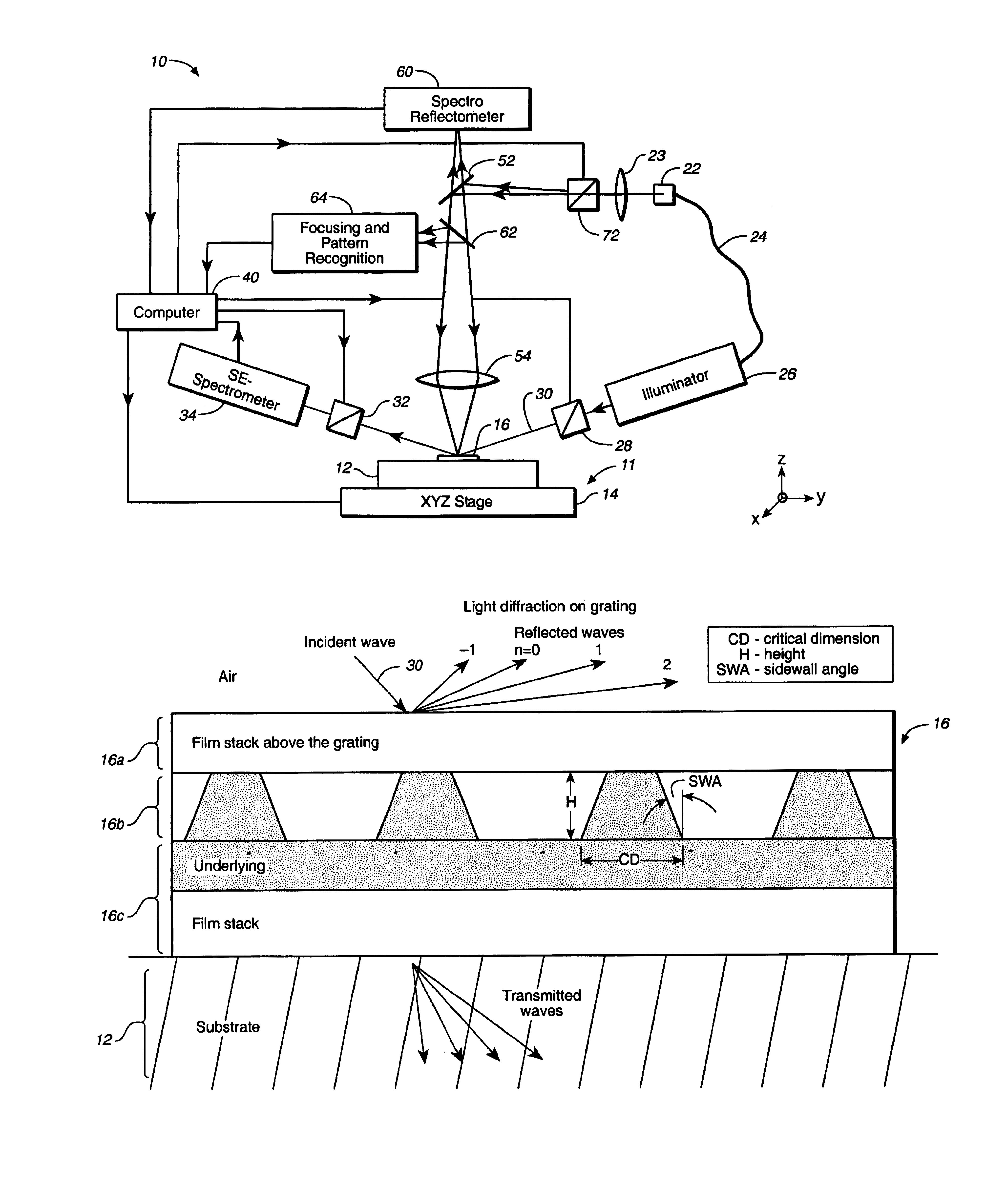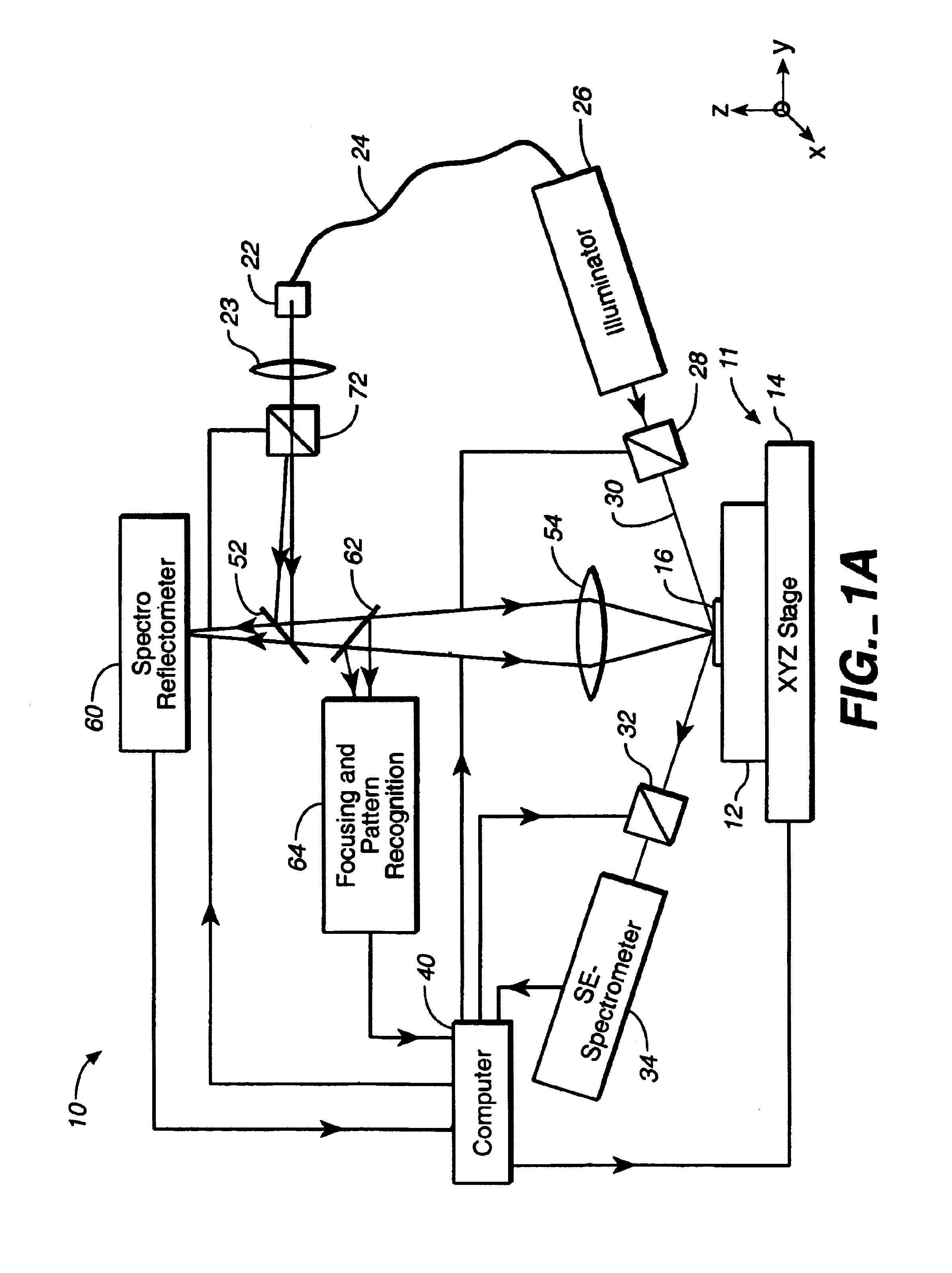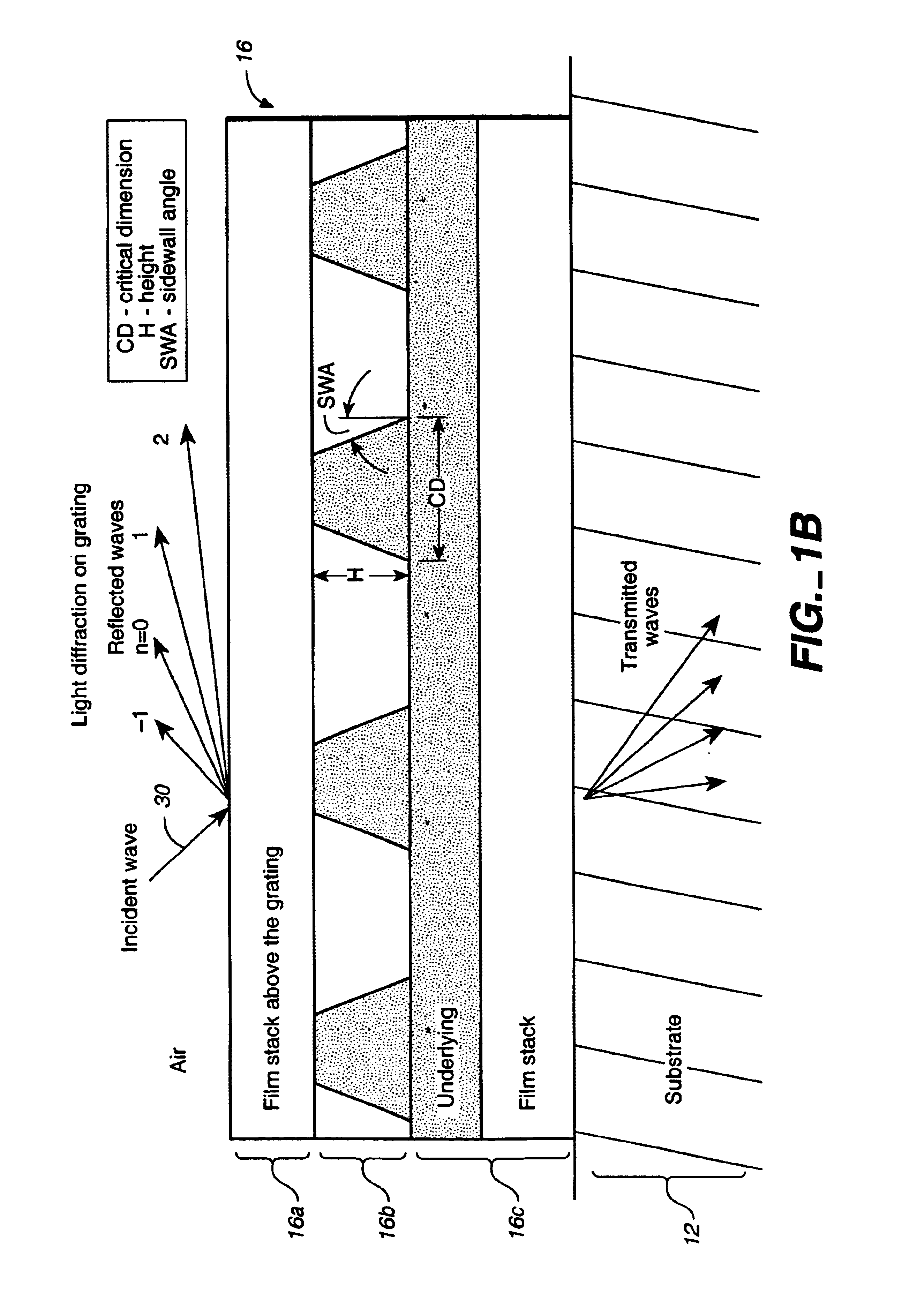System for scatterometric measurements and applications
a scatterometric and scatterometer technology, applied in the field of scatterometers, can solve the problems of difficult refinement and time-consuming calculation of the multi-dimensional look up table used in conventional scatterometry, and achieve the effects of improving the most time-consuming and least robust part of modelling, improving the accuracy of the calculation, and simplifying the processing
- Summary
- Abstract
- Description
- Claims
- Application Information
AI Technical Summary
Benefits of technology
Problems solved by technology
Method used
Image
Examples
Embodiment Construction
[0034]Even though much of the description below of algorithms and methods are described in terms of the reflected or transmitted intensities of the diffraction caused by the diffracting structure, it will be understood that the same techniques and algorithms may be used for data containing information concerning changes in the polarization state over different wavelengths (e.g. ellipsometric parameters and as functions of wavelength). For this reason, it may be advantageous to employ an instrument which is capable of measuring both the reflected or transmitted intensities of the diffraction caused by the structure as well as changes in polarization state caused by the diffraction of the structure. A suitable system is described below in reference to FIG. 1A.
[0035]FIG. 1A is a schematic view of a spectroscopic scatterometer system to illustrate the preferred embodiment of the invention. As shown in FIG. 1A, system 10 may be used to measure reflected or transmitted intensities or chan...
PUM
| Property | Measurement | Unit |
|---|---|---|
| wavelengths | aaaaa | aaaaa |
| wavelengths | aaaaa | aaaaa |
| wavelengths | aaaaa | aaaaa |
Abstract
Description
Claims
Application Information
 Login to View More
Login to View More - R&D
- Intellectual Property
- Life Sciences
- Materials
- Tech Scout
- Unparalleled Data Quality
- Higher Quality Content
- 60% Fewer Hallucinations
Browse by: Latest US Patents, China's latest patents, Technical Efficacy Thesaurus, Application Domain, Technology Topic, Popular Technical Reports.
© 2025 PatSnap. All rights reserved.Legal|Privacy policy|Modern Slavery Act Transparency Statement|Sitemap|About US| Contact US: help@patsnap.com



